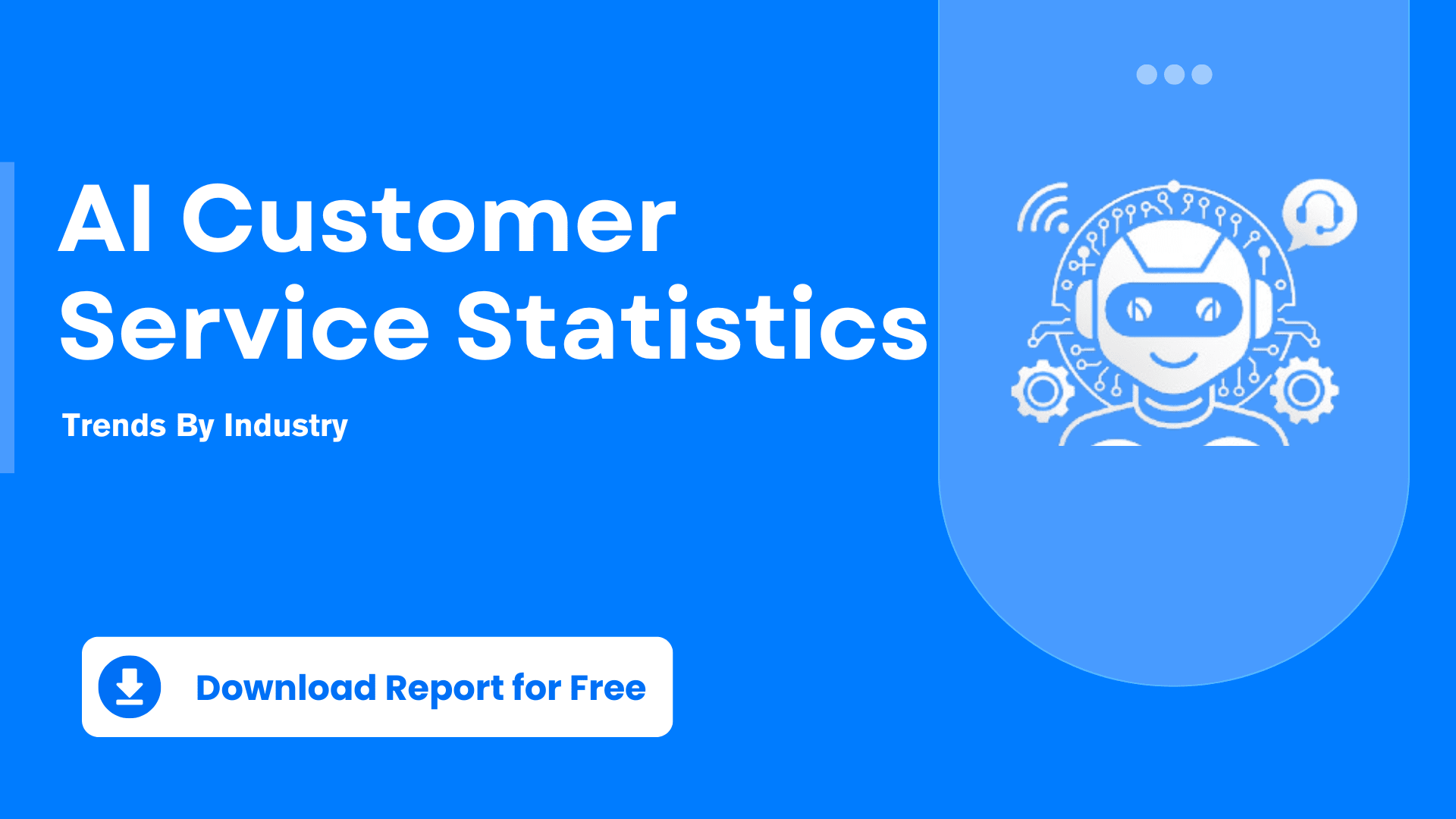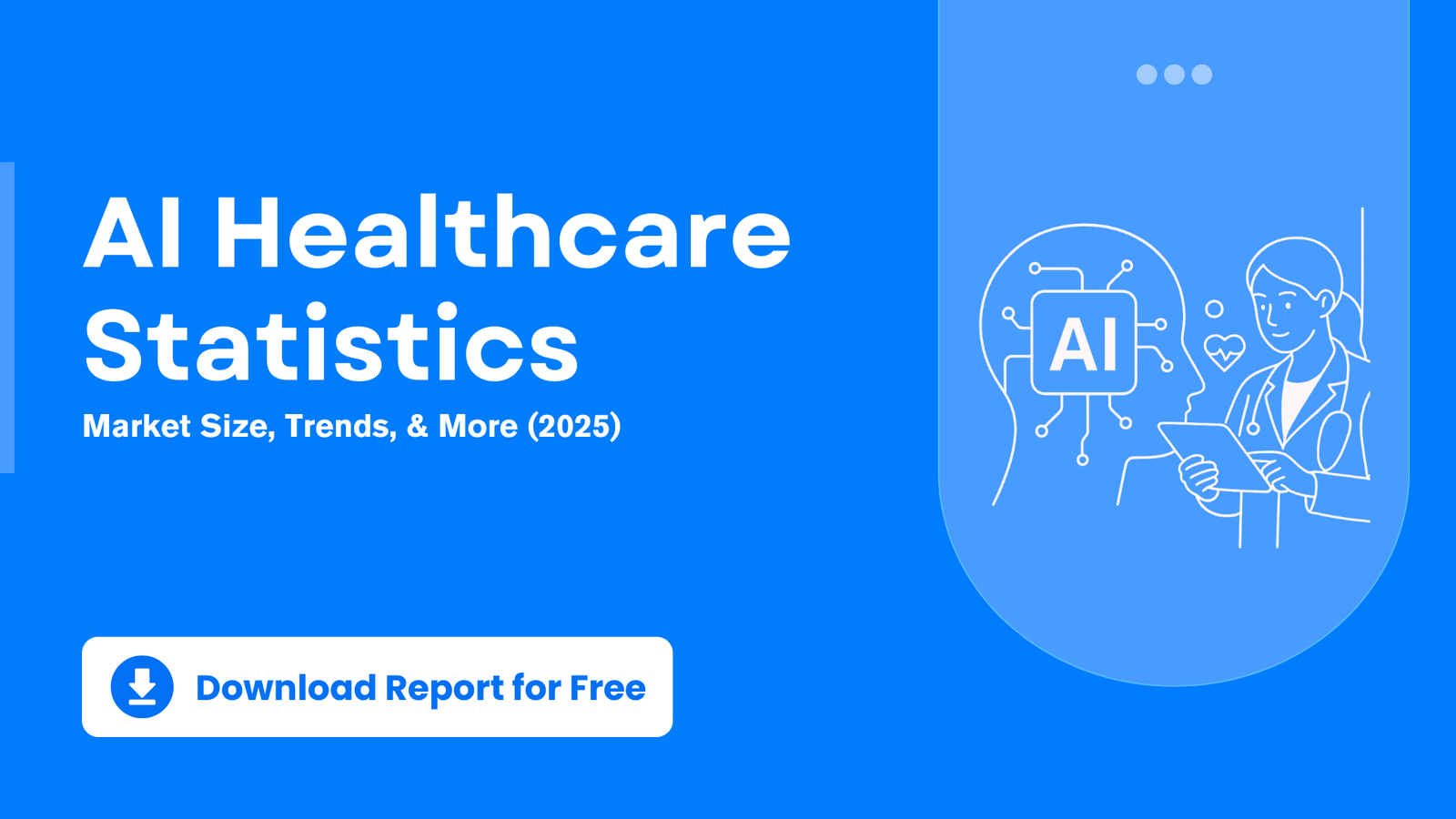Businesses are increasingly adopting AI tools such as virtual assistants and chatbots to enhance efficiency, improve customer satisfaction, and reduce costs.
Due to AI Automation, around 85% of the customer interactions are handled without the need for a human agent, and on top of that, 60% of companies using Artificial intelligence report high customer satisfaction scores.
To learn how AI is reshaping the customer service landscape, right from automating routine tasks to significantly improving response time and service quality, here are the top AI customer service statistics that you can check out.
Key AI Customer Service Stats (2025)
- Around 72% of customer service leaders believe that AI can provide better customer service than humans.
- Customer service agents who use AI tools such as knowledge assistants, chatbots, etc., can increase their productivity by 13.8% handling more inquiries per hour.
- Around 49% of U.S. adults have engaged with AI-powered chatbots for customer service within the past few years.
- Chatbots, Sentiment Analysis, Augmented messaging, Voice Analysis, etc, are some of the top AI-powered tools used in Customer service.
- The global sentiment analysis market was valued at $357.8 million in 2024 and is projected to reach approximately $1.45 billion by 2030.
Impact of AI on Modern Customer Service
Nearly 42% of customer experience leaders expect generative AI to impact voice-based interactions in the next 2 years.
AI chatbots offer 24/7 customer support, making them an ideal solution for global businesses that can handle inquiries across different time zones.
Artificial Intelligence has the potential to lower the operational costs in customer service, where studies show the reduction of costs by 30% to 35% for several organizations.
Market Dynamics of AI in Customer Service
The Artificial Intelligence in the customer service market was valued at $12.6 billion in 2024 and is projected to grow to $15.85 billion by 2025.
The value is expected to reach $47.82 billion by 2030, expanding at a CAGR of 25.8% over the forecast period.
The table below represents the estimated value of AI in Customer Service from 2024 to 2030.
| Year | Estimated Value |
|---|---|
| 2024 | $12.60 billion |
| 2025 | $15.85 billion |
| 2026 | $19.94 billion |
| 2027 | $25.08 billion |
| 2028 | $31.56 billion |
| 2029 | $39.70 billion |
| 2030 | $47.82 billion |
- In 2024, the United States dominated the North American AI for customer service market, generating the highest revenue share in the region.
- The global chatbot market share is expected to reach around $27.29 billion by 2030.
- Machine learning and deep learning made up the largest part of the AI customer service market, contributing 43.5% of the total revenue.
- Among applications, the virtual assistants and chatbots were most widely used, holding a market share of 28.1%.
AI Customer Service Trends by Industry
The telecommunications and Banking are the major industries making maximum use of Artificial intelligence for customer service.
To get a complete insight into AI customer service trends across different industries, you can check out the data below.
Healthcare Industry
- The AI healthcare market is projected to grow at an annual growth rate of 44.9% globally, reaching $45.2 billion by 2026.
- Around 87% of the healthcare organizations are investing or planning to invest in AI Technologies.
- 75% of the top healthcare companies are actively experimenting with generative AI or planning to scale the use of AI across their organizations.
Banking and Financial Industry
- The banking sector is expected to invest more than $73 billion in AI technologies by the end of 2025, representing a 17% year-over-year increase in spending.
- Approximately 54% of customer interactions in U.S. banks are automated through AI-driven systems.
- The Future AI investments in the Banking and financial sector majorly focus on:
- 65.5% for a virtual assistant enabling self-service.
- 72.5% for improving chatbots
- 82.5% for analyzing contact center data
Retail
- 63% of the retail businesses make use of artificial intelligence, especially for customer interactions.
- The global AI market in retail and e-commerce is projected to expand significantly from $9.4 billion in 2024 to $85.1 billion by 2032, with a CAGR of 31.8%.
- 56% of retail and e-commerce leaders believe that the biggest impact of AI on the retail organization is through enhancing operational efficiency.
Telecommunications
- 60% of the inquiries are handled by AI-powered chatbots in most of the telecommunication firms.
- 56% of the customers prefer using self-service options such as apps or online portals when it comes to selecting or customizing the mobile and data plans. 77% of the users use it for routine transactions such as recharges and bill payments.
- Implementing AI-driven automation can help telecom companies cut operational costs by up to 30%.
How does AI contribute to personalized customer experience?
Artificial intelligence is revolutionizing personalized customer experiences by allowing businesses to analyze, anticipate, and meet customer needs on a large scale.
The AI-powered personalization has the potential to boost revenue by up to 15% as it allows businesses to deliver more timely and relevant experiences across the customer journey.
- A significant 82% of consumers are willing to share their personal data when it results in more tailored and personalized experiences.
- According to SurveyMonkey, 65% of customers use AI to order food and drinks, while 59% are open to using AI for processing product returns.
- Yum Brands reported that AI-powered personalized marketing boosted their purchases and lowered customer churn, showing its effectiveness.
Limitations of AI in Customer Service Applications
Even though AI has transformed customer service through 24/7 availability and faster response time, it still faces significant limitations. Below are a few limitations associated with AI in customer service.
- Lack of Human Touch- As per a report from SurveyMonkey, 61% of customers say that their needs are understood better by humans as compared to AI.
- Misunderstanding customer intent- AI chatbots fail to understand the customer intent in 20% to 30% interactions.
- AI systems require ongoing maintenance and updates to remain effective- As AI systems depend on data algorithms, if these algorithms are not updated frequently, there is a risk of providing misleading information.
- Language and emotion recognition issue- AI detects the emotional tone accurately only 60% to 70% time.
- Cost Misconception- 43% of contact centers have implemented AI technologies, resulting in a 30% decrease in operational costs.
The following study from Forbes highlights the level of trust in businesses in implementing artificial intelligence.
| Level of trust | Percentage |
|---|---|
| Very Likely | 33% |
| Somewhat likely | 32% |
| Very Unlikely | 7% |
| Somewhat Unlikely | 7% |
| Neither likely nor unlikely | 21% |
Source: Forbes
AI in Customer Service: Future Outlook and Evolving Trends
The future of AI in customer service is about working smoothly alongside humans, giving smart and timely help, and supporting customers across different channels.
- By the end of 2025, artificial intelligence is projected to manage 95% of customer interactions, including both voice and text-based communication.
- The generative AI in customer service is projected to grow from $371.1 million in 2023 to $3.23 billion by 2033, reflecting a compound annual growth rate of 24.17%.
Omnichannel support allows businesses to connect all customer communication channels, such as email, social media, SMS, and phone, into one seamless system, ensuring a consistent and uninterrupted experience.
- Gartner forecasts that by 2029, agentic AI will be able to resolve 80% of customer issues independently.
The above trends highlight a transformative shift in customer service, where Artificial intelligence not only enhances efficiency but redefines the entire customer experience.
Customer Service Stats by Social Media Channel
- Social media has become one of the most powerful tools for customer service, as nearly 70% of people use social media platforms to contact brands for customer support.
Here’s the list of top platforms that consumers and brands use for customer service.
| Platforms | Use of platforms by Consumers | Use of platforms by brands |
|---|---|---|
| 60% | 69% | |
| 35% | 60% | |
| YouTube | 33% | 31% |
| TikTok | 21% | 29% |
| 15% | 32% | |
| Snapchat | 13% | 14% |
| 10% | 7% | |
| 9% | 9% | |
| 7% | 20% |
Source: SproutSocial.
Facebook and Instagram are the most widely used social media platforms by consumers as well as different brands for customer service.
Their broad user base and built-in messaging tools make them ideal for handling inquiries, resolving issues, and maintaining real-time customer engagement.
Conclusion
To sum up, AI is revolutionizing customer service. From reducing costs and improving response time to enabling seamless and personalized experiences, AI has become an essential part of modern customer service.
As AI adoption continues to grow, the businesses that leverage AI efficiently will not only enhance customer satisfaction but also gain a competitive advantage in the increasingly digital marketplace.


